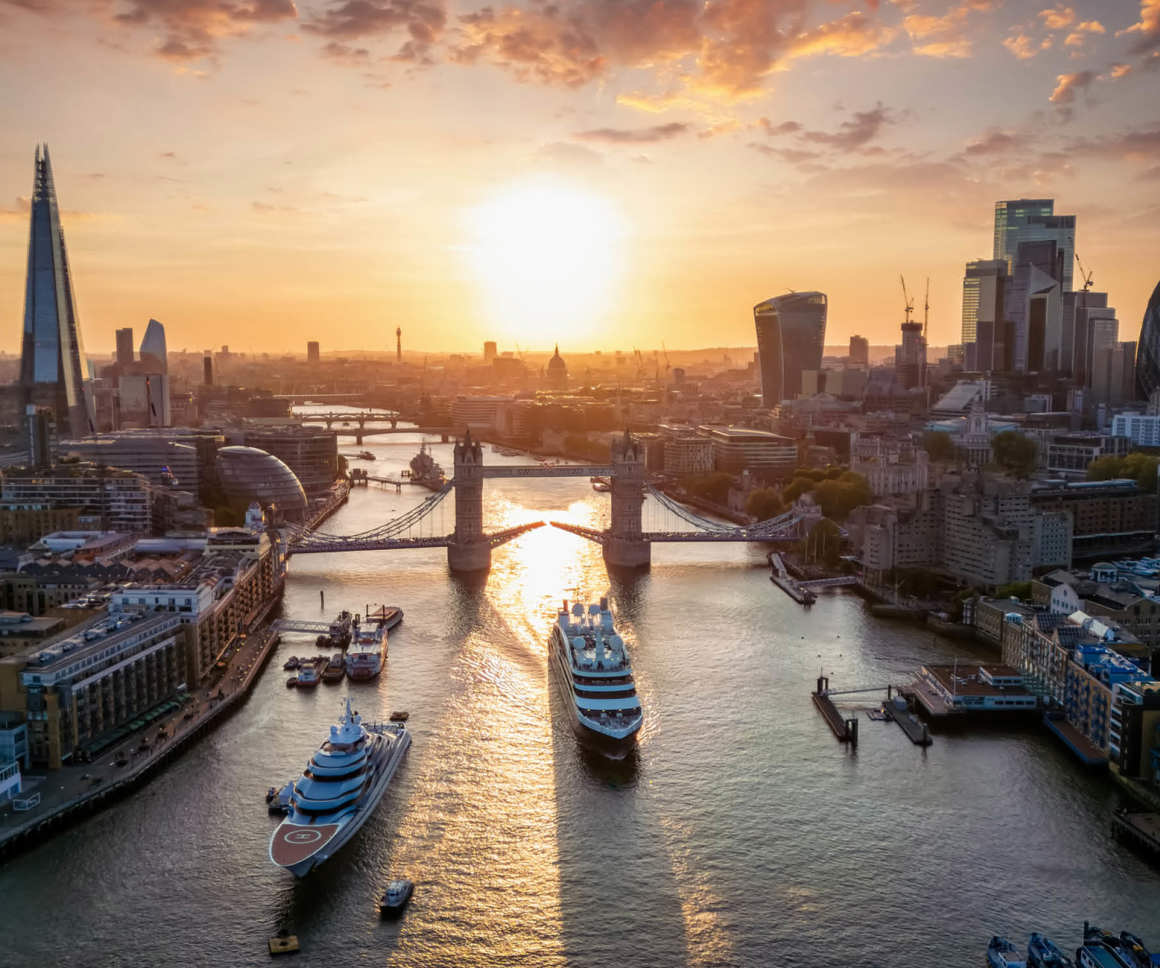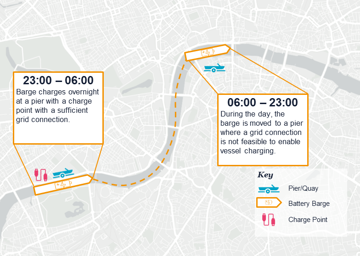From tradition to transition: Exploring LCP Delta’s role in decarbonising the River Thames
Energy transition Energy consultancy New energy business models
For centuries, London’s River Thames has connected people and places, powering the city’s growth. Now, as decarbonisation efforts accelerate, the Thames is taking on a new role: a dynamic energy asset capable of enhancing the resilience of London’s power network.
LCP Delta, alongside partners UK Power Networks, Marine Zero, ev.energy and the Port of London Authority, are shaping the decarbonisation of the Thames, with the pioneering Electric Thames project, funded by Ofgem’s Strategic Innovation Fund (SIF).
The challenge is significant. The UK maritime sector is faced with decarbonising its fleet and, as the country’s busiest waterway, the Thames represents an opportunity to lead the way with innovation. The goal is to create a scalable, sustainable template for clean-powered vessels – one with the potential to use boat-to-grid (B2G) technology, benefitting both operators and the local energy system. However, for vessel operators, the solution is far from straightforward. Early stakeholder engagement has highlighted significant obstacles, such as the impracticality of retrofitting existing vessels with batteries or hydrogen fuel cells or replacing fleets entirely. On top of this, there is the challenge of installing the right amount of charging infrastructure to meet demand from operators.
The Electric Thames SIF project, now in its second phase (Alpha), is addressing these challenges, answering crucial questions about energy infrastructure and business models as well as providing a scalable framework for maritime decarbonisation.
A clean-powered pathway
The Thames is home to a diverse range of vessels, from passenger ferries and tourist boats to tugboats and workboats. While each vessel plays a vital role in the city’s economy and daily life, electrifying this fleet presents several challenges:
- Energy demand: How do we meet the significant energy needs of vessels without disrupting operations?
- Infrastructure location: Where is charging infrastructure required, and how can it be deployed effectively?
- Grid impact: Ensuring the local energy network has all the information to support the additional demand from electric vessels.
For operators whose vessels are in constant use, ensuring there is a large enough battery to power them throughout the day is critical. Meanwhile, others may have the flexibility to make quick 'top-ups' at strategically placed charging points. Electric Thames is addressing these questions by designing an electrified network of piers and quays equipped with chargepoints to deliver the necessary power. By engaging with vessel operators and analysing vessel traffic data, we are gaining insight into the operational patterns of the different types of vessels.

Figure 1: Traffic heatmap of all vessels operating on the Thames on 08/03/24 at 5AM GMT (top) and 5PM GMT (bottom).
The data provides insight into the journeys being made, when they occur and where vessels will need to charge. By carefully analysing these factors, along with any necessary network upgrades, Electric Thames is creating a clean-powered pathway for decarbonised vessels to operate seamlessly.
Floating flexibility
The project is exploring the potential value of B2G technology. B2G brings a system benefit to the network and provides operators with the opportunity to reduce their operational costs by selling unused power back to the grid.
Here's how it works:
- Vessels as energy assets: When moored, operators of electrified vessels can participate in the ancillary services market and feed surplus power back into the grid to support the network during peak demand.
- Battery barges: Another application of B2G could be in the form of a battery stored on a barge. These floating batteries could be charged overnight when the price of electricity is low and moved to areas of peak demand to support the network and minimise reinforcement costs.
By turning vessels into active participants in the energy system, we're enhancing flexibility and supporting London’s power network with resilience during peak times.

Figure 2: Example of a battery barge in operation, reducing strain on the grid
By turning vessels into active participants in the energy system, we're enhancing flexibility and supporting London’s power network during peak times.
But what about the cost?
Our initial analysis suggests that operators could see significant operational cost savings by switching to electric, including:
- Reduction in fuel cost by accessing cheap electricity during off-peak periods.
- Offsetting electricity cost with B2G energy trading.
- Reduced maintenance cost.
- Delivering significant carbon savings, cutting emissions across London’s busiest waterway and improving air quality for millions of residents.
Despite these savings, arguably the biggest challenge remains in the upfront cost to transition the existing fleet. To tackle this, Electric Thames is exploring innovative new business models that incorporate different players in the energy transition to reduce the burden on individual stakeholders.
Our New Energy Strategies research service service identifies and evaluates new business business models that make this transition feasible and financially attractive by asking the tough questions: What revenue streams can new technologies unlock? How can costs and risks be fairly distributed among stakeholders? How do we incentivise early adoption while ensuring long-term scalability?
By leveraging their expertise, the project team is developing robust, innovative frameworks to support investors and stakeholders in projects like Electric Thames, helping drive the broader transition to net zero.
Have questions about the Electric Thames project?
Contact us to find out moreSubscribe to our thinking
Get relevant insights, leading perspectives and event invitations delivered right to your inbox.
Get started to select your preferences.







